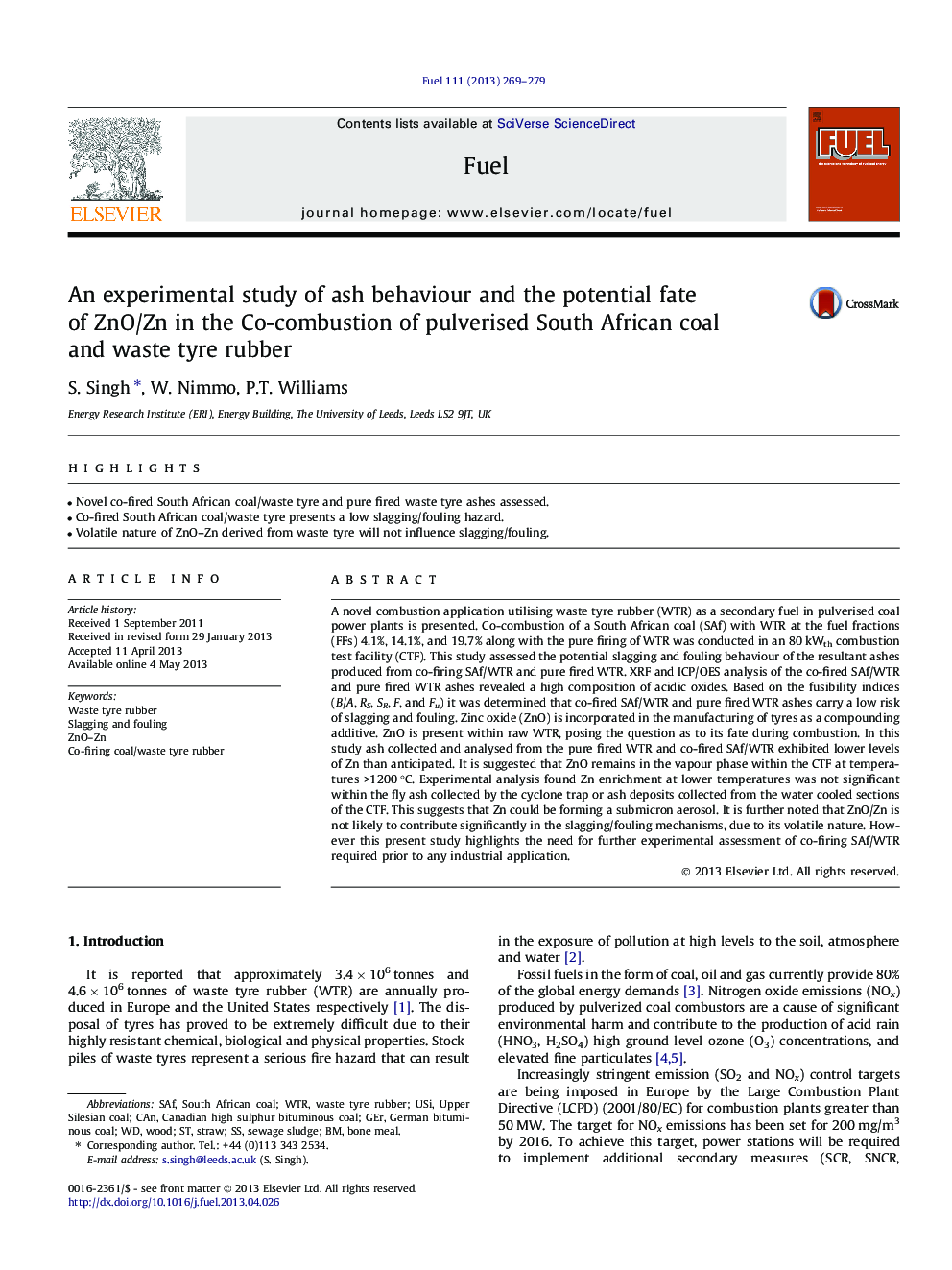| Article ID | Journal | Published Year | Pages | File Type |
|---|---|---|---|---|
| 6640367 | Fuel | 2013 | 11 Pages |
Abstract
A novel combustion application utilising waste tyre rubber (WTR) as a secondary fuel in pulverised coal power plants is presented. Co-combustion of a South African coal (SAf) with WTR at the fuel fractions (FFs) 4.1%, 14.1%, and 19.7% along with the pure firing of WTR was conducted in an 80 kWth combustion test facility (CTF). This study assessed the potential slagging and fouling behaviour of the resultant ashes produced from co-firing SAf/WTR and pure fired WTR. XRF and ICP/OES analysis of the co-fired SAf/WTR and pure fired WTR ashes revealed a high composition of acidic oxides. Based on the fusibility indices (B/A, RS, SR, F, and Fu) it was determined that co-fired SAf/WTR and pure fired WTR ashes carry a low risk of slagging and fouling. Zinc oxide (ZnO) is incorporated in the manufacturing of tyres as a compounding additive. ZnO is present within raw WTR, posing the question as to its fate during combustion. In this study ash collected and analysed from the pure fired WTR and co-fired SAf/WTR exhibited lower levels of Zn than anticipated. It is suggested that ZnO remains in the vapour phase within the CTF at temperatures >1200 °C. Experimental analysis found Zn enrichment at lower temperatures was not significant within the fly ash collected by the cyclone trap or ash deposits collected from the water cooled sections of the CTF. This suggests that Zn could be forming a submicron aerosol. It is further noted that ZnO/Zn is not likely to contribute significantly in the slagging/fouling mechanisms, due to its volatile nature. However this present study highlights the need for further experimental assessment of co-firing SAf/WTR required prior to any industrial application.
Keywords
Related Topics
Physical Sciences and Engineering
Chemical Engineering
Chemical Engineering (General)
Authors
S. Singh, W. Nimmo, P.T. Williams,
